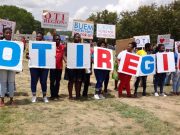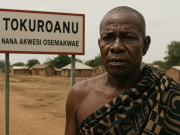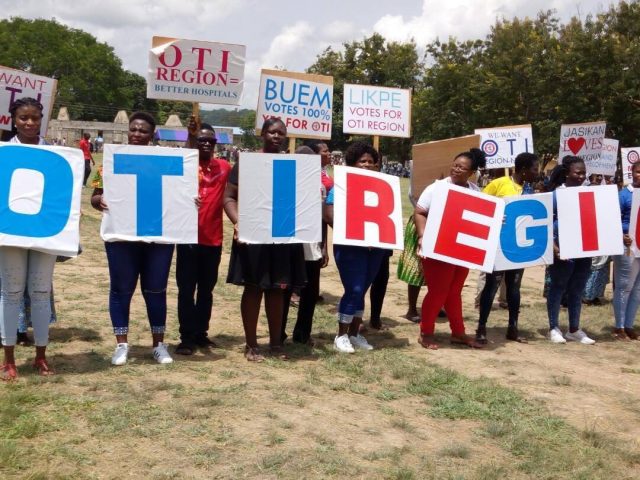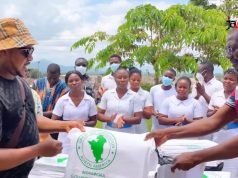DAMBAI – Six years after its creation, Ghana’s Oti Region is positioning itself as an emerging investment destination while grappling with the challenges of balancing rapid development with the preservation of its diverse cultural heritage.
From Referendum to Region
The Oti Region became Ghana’s newest administrative territory following a December 2018 referendum in which 98.64% of voters—319,296 out of 323,708—approved its separation from the Volta Region. The region was officially inaugurated on May 14, 2019, with Dambai designated as its capital.
Spanning 13,233 square kilometers, the region now operates through eight Municipal and District Assemblies: Kadjebi, Jasikan, Nkwanta North, Nkwanta South, Krachi East, Krachi Nchumuru, Biakoye District, and Krachi West.
A Study in Diversity
The Oti region is heterogeneous, with diverse socio-cultural practices spread across twenty-one paramountcies. Approximately 25 different ethnic groups and dialects coexist in the territory, making it what local officials describe as a “macrocosm of Ghana.”
Major ethnic groups include Guan-speaking tribes such as Krachi, Nchumuru/Chonke, Buem, Nkonya, Asante, Akyode, Adele, and Ntrobo. The region also hosts migrant settler communities including Konkombas, Ewes, Dagombas, Hausa, and Kotokoli populations.
Religious affiliation breaks down to approximately 65% Christianity, 25% Islam, and 10% African traditional religion, according to regional data. Multiple languages are spoken across the region, including French, English, Guan, Twi, and Ewe.
Cultural Calendar and Heritage Sites
The region’s cultural calendar features numerous festivals tied to agricultural cycles. The Gyogyi annual yam festival celebrated by the Akyode people, the Nanaba/Dente Akwambo festival of the Krachi people, and the Buem Lilu Festival marking the first yam harvest are among the major annual celebrations.
The Gidifon festival of the Adele people maintains strict traditional protocols, with consumption of new yam prohibited before prescribed rituals honoring the Efuroko Stool are completed. Other significant events include the Sankyiba festival in Nkonya Wuropong and the Akwantutenten festival in Worawora.
Tourism attractions include Kyabobo National Park, a 220-square-kilometer conservation area established in 1997 that contains Mount Dzebobo, Ghana’s second-highest mountain. The park supports populations of elephants, antelopes, and various bird species.
Shiare, known locally as “The Hanging Village,” represents a 900-year-old settlement built on the Breast Mountains. The Guan-speaking Akyode residents have constructed homes from rocks and clay on terraced mountainsides, creating what tourism officials consider one of Ghana’s most distinctive traditional settlements.
Geography and Climate Patterns
The region experiences a semi-arid climate distinctly drier than southern Ghana. Vegetation consists primarily of grassland and savanna with drought-resistant species including baobabs and acacias. Annual rainfall ranges from 750 to 1,050 mm, concentrated between May and November.
Temperature variations are significant, ranging from 14°C at night to 40°C during daytime hours. The Harmattan wind from the Sahara affects the region between December and early February.
Agricultural Base and Economic Initiatives
Agriculture dominates the regional economy, with major crops including maize, yam, cassava, rice, mangoes, watermelon, cashew, and tomatoes. The government has allocated 24,200 hectares for irrigation farming to two districts in the region.
Chinese investors from Tiast Group have announced plans for a cassava processing factory and 2,000-acre farm valued at a minimum of $5 million. The project will operate through an out-grower system involving 150-200 local farmers.
The Ghana Geological Survey Authority has identified high-grade iron ore deposits measuring 55.22 weight percent (Fe) in Akokrowa, though no timeline for extraction has been announced.
Investment Push
On October 30, 2025, the Ghana Investment Promotion Centre (GIPC), working with the Oti Regional Coordinating Council, held a regional investment roadshow in Dambai to showcase opportunities in agriculture, tourism, manufacturing, and natural resource development.
The event reflects ongoing efforts by regional authorities to attract capital to an area that remains one of Ghana’s least economically developed territories despite its natural and cultural resources.
Challenges Ahead
The region faces typical challenges associated with newly created administrative territories: developing infrastructure, establishing effective governance structures, and creating economic opportunities for a predominantly rural population while maintaining cultural traditions that span centuries.
As the Oti Region enters its seventh year, its trajectory will test Ghana’s approach to decentralized governance and regional development in areas historically underserved by central government investment.





















